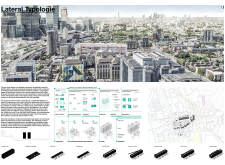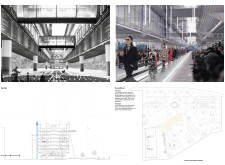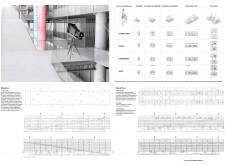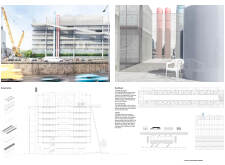5 key facts about this project
Modular Design and Community Integration
The project employs a modular design strategy that allows for adaptability and reconfiguration of spaces based on shifting needs. Open floor plans facilitate multipurpose use, enabling residences to seamlessly integrate with commercial and public amenities. This fluid spatial organization creates a sense of community and encourages social engagement among diverse users. The inclusion of community-oriented features, such as shared gardens and workspaces, underscores the project’s commitment to fostering connections among residents and visitors alike.
A distinctive aspect of this project is its focus on 'common luxury,' wherein high-quality shared spaces are made accessible to all. This approach challenges traditional notions of exclusivity in urban architecture, promoting inclusivity within premium environments. The design prioritizes communal living while enhancing individual experiences through thoughtfully designed public areas.
Sustainable Practices and Materiality
With a strong emphasis on sustainability, the architectural design incorporates eco-friendly materials and systems. Key materials used include glass, steel, concrete, and sustainable roof materials, each selected for their durability and environmental benefits. The extensive use of glass promotes natural light and visual connectivity, while steel provides structural integrity in a modular format.
The integration of green roofs not only enhances the aesthetic quality of the project but also contributes to reducing energy consumption, thus aligning with contemporary environmental standards. This focus on sustainability complements the overall objective of creating a harmonious relationship between the building and its surrounding urban landscape.
To explore the architectural plans, sections, designs, and ideas in further detail, readers are encouraged to review the project presentation. Engaging with these elements will provide deeper insights into the innovative approaches that define this unique architectural project.


























